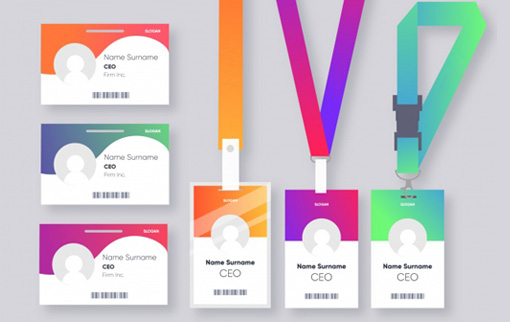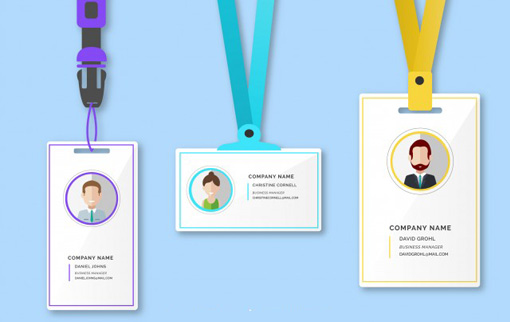Understanding Custom Badges: Types, Benefits, and Design Ideas
Custom badges are personalized identification items that enhance recognition and professionalism in various settings. These badges are crucial for businesses, events, and organizations, serving as effective tools for identification, branding, and networking. In this blog post, we will explore what custom badges are, their importance, the different types available, creative design ideas, styles, affordability, and quality.
Introduction to Custom Badges
Custom badges are personalized identification or branding items used to identify individuals and reinforce brand presence. They often include elements like names, logos, roles, or scannable codes. Badges are essential for facilitating interactions at events and workplaces.
There are several types of badges:
- Logo Badges
- Name Badges
- Event Badges
- ID Badges
Whether used in events, conferences, or daily workplace interactions, custom badges play a significant role in communication and visibility. For more information, check this source: source.
Importance of Custom Badges
Organizations utilize custom badges for several vital reasons:
- **Identification:** Helps quickly identify employees, visitors, and guests.
- **Security:** Enhances safety by ensuring authorized personnel are easily recognizable.
- **Brand Visibility:** Strengthens brand recognition through consistent branding across all badges.
The benefits of using custom badges include:
- **Brand Recognition:** Promotes awareness of your business or event.
- **Clear Roles:** Facilitates smoother interactions by clarifying roles and responsibilities.
- **Personalization:** Aids in making attendees feel included and valued.
Custom badges enhance networking opportunities and streamline communication. For further insights, visit: source, source.
Types of Custom Badges
Logo Badges
Logo badges prominently display a company’s or event’s logo. They are pivotal for branding, as they create instant recognition and maintain a cohesive image across different platforms.
Common industries that use logo badges include:
- Events
- Hospitality
- Trade Shows
- Corporate Environments
For more details, refer to: source.
Name Badges
Name badges are designed to display a person’s name, often along with their title and organization. They are commonly used at workplaces and events to promote clear identification, which enhances networking and interactions.
Personalization options for name badges include:
- Variable data printing for names and titles
- QR codes for quick access to profiles
- Custom designs, such as photos and role indicators
Learn more about personalized badges here: source.
Badge Design Ideas
Badge design plays a crucial role in functionality and aesthetics. Here are some creative design ideas to consider:
- **Bold Color Schemes:** Use vibrant colors that align with your brand while ensuring readability.
- **Font Selection:** Opt for clean fonts that are easy to read from a distance.
- **Graphics and Icons:** Incorporate relevant graphics or icons to enhance visual appeal.
Additional design elements can include:
- Tiered color banners to denote different roles (VIP, Speaker, etc.).
- QR codes linking to attendee profiles for enhanced engagement.
- Large names and roles that prioritize clarity in information hierarchy.
Explore more design ideas at this source: source.
Custom Badge Styles
There are various styles of custom badges available. Here are some popular styles:
- **Pin-On Badges:** A classic style, typically used for uniform applications.
- **Magnetic Badges:** Fabric-friendly and do not damage clothing.
- **Lanyard Badges:** Easily visible and ideal for events.
- **Clip or Badge Reel:** Convenient for frequent scanning in workplaces.
When choosing a badge style, consider:
- The type of event or setting (e.g., lanyards for conferences).
- Company culture (e.g., magnetic badges for formal attire).
- Practicality based on the frequency of use.
For detailed insights, visit: source, source.
Affordable Custom Badges
Finding budget-friendly options for custom badges is possible without sacrificing quality. Here are some affordable options:
- **Paper or Synthetic Card Inserts:** Cost-effective and easy to use.
- **Bulk Printing:** Reduces the cost per badge significantly.
To balance quality and affordability, consider the following tips:
- Prioritize essential features like legibility and basic customization.
- Utilize batch printing techniques to control costs.
For more advice on affordable custom badges, see: source.
High-Quality Badges
High-quality badges are essential for professionalism and durability. Characteristics of high-quality badges include:
- Durable materials such as rigid PVC or composite materials.
- Professional printing with sharp colors and secure fastenings.
- Well-crafted finishes that enhance the badge’s appearance.
Materials and production processes matter too:
- Event badges should be laminated or printed on PVC.
- Workplace IDs may need features like barcodes and magnetic strips.
For more information about high-quality badges, check: source, source.
Conclusion
In conclusion, custom badges are essential for enhancing brand recognition and professionalism. They facilitate smooth identification and access, creating an inclusive atmosphere in both events and workplaces. The flexibility in choosing badge types, designs, and styles allows organizations to meet a variety of needs effectively.
Exploring options from logo badges to various design ideas can help you create memorable experiences at any gathering or corporate setting. For more resources, check: source, source, source.
Call to Action
Ready to embark on your custom badge journey? Start by gathering your brand assets and defining your badge needs. Consider including essential details such as names, roles, companies, and QR codes. Don’t hesitate to reach out to reputable custom badge providers for quotes and consultations that can compare styles, materials, and pricing that suit your specific needs.
Explore options for custom badges today and ensure you have affordable, high-quality badges that represent your brand effectively! For more guidance, visit: source, source, source.



